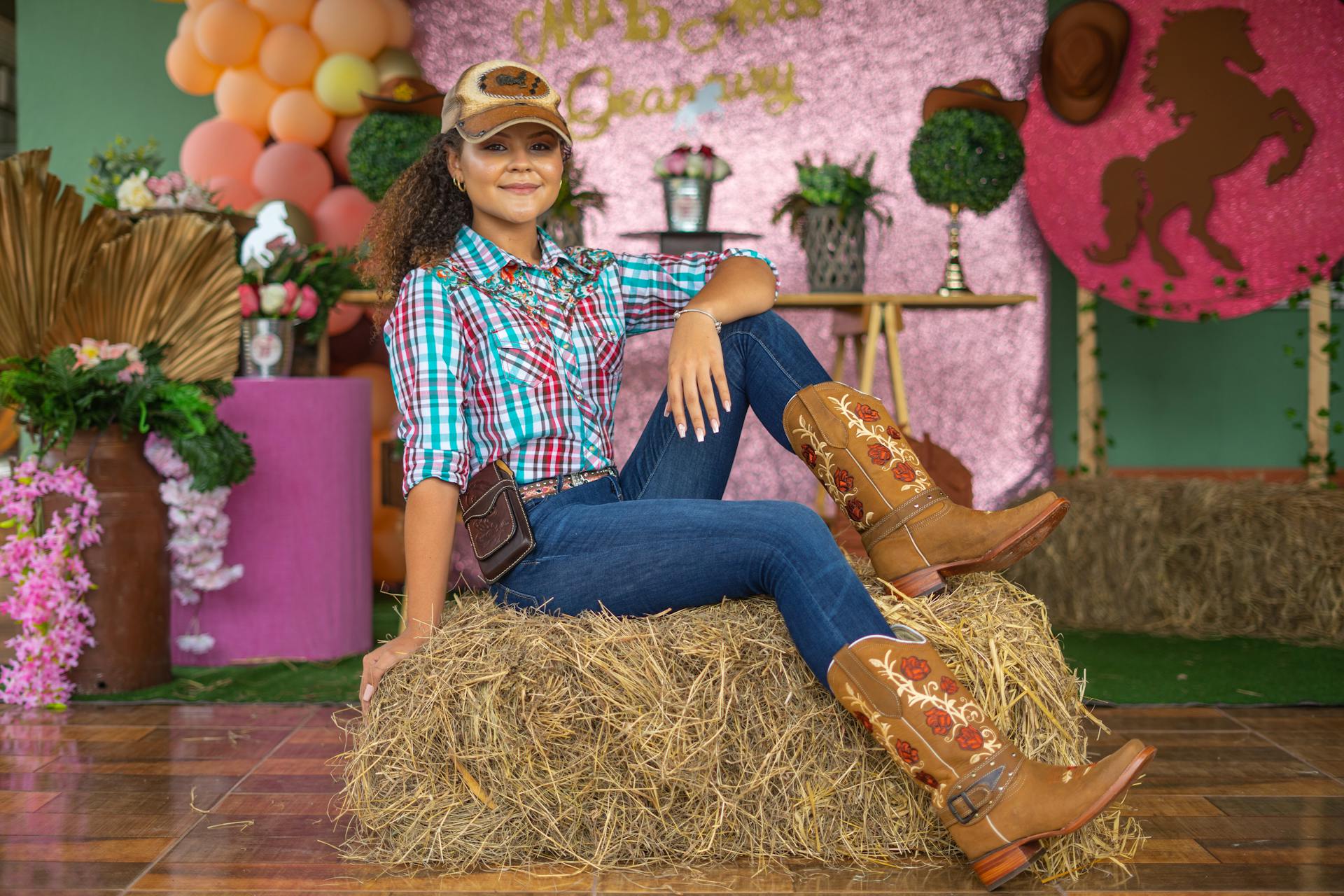
Greenhouse PR recently commissioned Paper artist Sam Pierpoint to create a short paper-cut animation for the PEFC (Programme for the Endorsement of Forest Certification) sustainable fashion campaign.
Greenhouse PR is an award-winning green PR agency that uses the power of communications to deliver positive social and environmental change.
PEFC is a non-profit, non-governmental organization providing third-party international standards and certifications for sustainable forest management. It regroups industry associations, trade unions, nature, and environmental organizations.
The PEFC certification system offers cheaper inspections for small forest owners that want to save forests for the future and protect them against destruction.
The sustainable fashion campaign is called Fashions Change, Forests Stay. It helps connect the fashion industry to sustainably managed forests and the fantastic fabrics that use them as a renewable source of raw materials.
"In this animation, we show the journey from forest to wardrobe, communicating how joining PEFC can benefit the supply chain and fashion brands as well as the natural world. This is a global effort, so we reflected this in the opening scene."
- Sam Pierpoint, paper-cut illustrator and image-maker
Standards like PEFC ensure that textile production uses environmentally friendly, sustainable processes and socially responsible working conditions.
They guarantee that fabric manufacturing has the least possible impact on people, the environment, animals and uses resources responsibly.
Many fibers used in the fashion industry, such as Lenzing EcoVero or MicroModal come from sustainable forest management. They are also biodegradable and compostable.
Austrian company Lenzing uses wood and pulp that comes from natural forests and sustainably managed plantations. The result is an eco-friendly material, one of the most sustainable, ethical, healthy, and safe.
These fabrics contain regenerated cellulosic fibers and have a very soft hand feel and luxurious appearance. Manufacturers use natural and renewable raw materials, filaments of cellulose made of wood pulp extracted from trees.
Fiber production is, however, often associated with massive deforestation and isn't eco-friendly in many cases. That's why it's crucial to stop forest destruction and human rights abuses.
Many fabrics made of cellulose come from logging in tropical rainforest areas. Every year, 120 million trees are logged to create textiles, including rayon, viscose, modal, and other trademarked textiles.
Producers worldwide need to use sustainable wood and implement responsible pulp sourcing practices.
Was this article helpful to you? Please tell us what you liked or didn't like in the comments below.
About the Author: Alex Assoune
More, More, More
Hand-Holding or Kissing: Which Should Come First in a Relationship?
Whether to hold hands or kiss first can carry significant weight, symbolizing the initiation of intimacy and emotional connection in a relationship. Kissing is a much more intimate gesture compared... Read More
10 Signs A Guy Wants To Hold Your Hand - Do Not Miss It!
Have you ever found yourself wondering about the hidden meanings behind a guy's gestures and body language? Human communication is often layered with unspoken cues, and one of the most... Read More
15+ Colorful Blasts To Win The Havana Nights Party Look
If you are invited to a Havana Nights Party and have never attended one, be ready to experience a spectacular mix of music, culture, and color. These parties recreate the...
Is Hand-Holding The New Flirting? What The Science Says
In the intricate dance of human interaction, few gestures are as universally recognized and yet as enigmatic as the act of holding hands. Whether it constitutes flirting can be complex... Read More
15 Fun & Practical Outfits to Wear to Panera Bread
We have the best tips on what to wear to Panera Bread, from preparing for a job interview, dressing for a day on the job, or simply planning a casual...
If A Guy Holds Your Hand, What Does It Truly Mean?
If a guy holds your hand, it often indicates that he feels a closeness and a desire to connect with you physically. Holding hands can be a gesture of affection,... Read More
15 Bold and Beautiful Looks to Wear In Lake Como
Nestled in the Northern Italian Alps, Lake Como is a picturesque, charming locale and popular vacation destination. With its stunning lake views, charming cobblestone streets, and warm weather, Lake Como... Read More
How to Get Over a Painful Breakup Fast And Thrive Again
Breaking up with someone you care about deeply can be one of life's most challenging experiences. The end of a relationship can leave you feeling emotionally drained, lost, and unsure... Read More
How To Nail The Techwear Aesthetic: 15 Amazing Tips
In the realm of contemporary fashion, where functionality meets style, techwear is an aesthetic that seamlessly blends innovation with urban style. Defined by their futuristic allure and practicality, techwear outfits have transcended traditional... Read More
When To Say "I Love You" For The 1st Time In a Relationship
Deciding when to say "I love you" for the first time in a relationship is a significant milestone, and timing can vary depending on the individuals and the dynamics of... Read More
15 Easy and Awesome Outfits to Wear to Mehndi Party
A Mehndi party offers a vibrant atmosphere of colors, music, and celebration. It is a celebration where friends and family come together to commemorate the impending union of two souls. ... Read More
10 Signs It's Time To Move In With Your Girlfriend (or not)
Deciding when to move in with your girlfriend is a big step that depends on several factors unique to your relationship and personal circumstances. Dating coaches and relationship experts say... Read More
She said she is not ready for a relationship - What to do now?
It can be frustrating when she says "I'm not ready for a relationship." But don't lose control of your emotions and keep your head high. It's essential to take a... Read More
15 Adorable Looks For Texas Roadhouse You'll Love To Wear
Since Texas Roadhouse has a laid-back and casual atmosphere, consider keeping your overall look relaxed. Instead, strive for an effortless and easygoing look that captures the carefree essence of the...
When Should You Meet The Parents: Guide to Making an Impression
The moment has arrived - you’re wondering about meeting your partner’s parents for the first time. Whether you’re feeling excited, nervous, or a mix of both, this milestone can be... Read More
15 Cute & Casual Outfits to Wear to Cracker Barrel
Whether gearing up for a job interview, clocking in for a shift, or planning a casual meal out, we’ve got you covered with 15 outfits to wear to Cracker Barrel.
Ultimate Guide: Which Finger Wears the Wedding Ring In India?
India and Indian culture is known for their extravagant weddings, with huge ceremonies, and celebrations that go on for days. Weddings and unions of couples are a huge part of... Read More
Can You Wear Uggs In The Rain? 15 Amazing Outfits
When the rain starts pouring down, many wonder if they can still rock their cozy Uggs without worrying about ruining them. In this article, you will find the answer to... Read More
What to Wear to IHOP: 15+ Best Stylish Outfits
Heading to IHOP for a delicious brunch or dinner outing? Elevate your food experience with a touch of style and flair. Whether meeting friends for pancakes or enjoying a meal solo,... Read More
16 Easy and Fun Outfits to Wear to Wendy's In 2024
When it comes to grabbing a quick bite or enjoying a casual hangout, Wendy's is the go-to spot for many. But just because you are headed for a fast-food fix does not mean you have... Read More
15 Polished And Practical Outfits To Wear To Chick-fil-A
When it comes to dining out, Chick-fil-A holds a special place in the hearts of many. Known for its delicious chicken sandwiches and exceptional service, Chick-fil-A attracts customers from all walks... Read More
How to Stay Dry and Chic at a Rainy Concert (17 Awesome Outfit Ideas)
Heading to a rainy concert does not mean sacrificing style for practicality. With the right outfit choices, you can stay dry, comfortable, and fashionable even when it is pouring down. Whether dancing... Read More
The 15 Most Amazing Outfit Ideas For A Jason Aldean Concert
If you are headed to a Jason Aldean concert you will want to dress to impress while staying comfortable for a night of country music fun. You can do this by choosing a cozy outfit that doesn't sacrifice... Read More
15 Beautiful And Practical Outfits For A Wu-Tang Concert
Heading to a Wu-Tang concert calls for an outfit that's not only stylish but also practical for the energy and movement of the event. You need fashionable clothes that allow you... Read More
Dive In The Cute And Fanciful World Of Kawaiicore Aesthetic
Kawaiicore is a Japanese fashion trend that consists of pastel colors, space-age clothes, statement prints, video games or cartoon-inspired outfits, statement pieces from the 1990s, and over-the-top looks, sometimes even dramatic...
What to Wear to Waffle House: 16 Ultimate Stylish Outfits
Heading to Waffle House is not just about satisfying your taste buds. It is an opportunity to showcase your unique style and personality. As you prepare to indulge in fluffy... Read More
The Ultimate Outfit Guide For A Duran Duran Concert - 15 Ideas
Heading to a Duran Duran concert is an amazing experience regardless if you are a die-hard fan or just a music enthusiast. It's a celebration of music, style, and nostalgia. And what better way to pay homage to... Read More






























0 comments